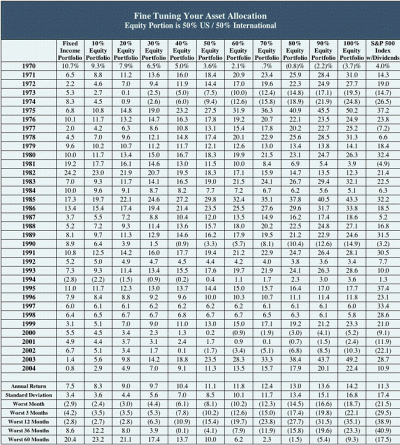Please see the attached data chart. As you can see, the data in the chart ends in 2004. I am trying to find the same type of data, but includes the period of the Great Recession.
Do you know where I can find this type of data? I am trying to make some decisions about asset allocation, and I want to look at annual return and standard deviation based on different stock/bond allocations. And I would like for the data to be as current as possible and include 2007-2009.
Thank you.
Do you know where I can find this type of data? I am trying to make some decisions about asset allocation, and I want to look at annual return and standard deviation based on different stock/bond allocations. And I would like for the data to be as current as possible and include 2007-2009.
Thank you.

